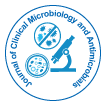

Perspective - (2023)Volume 7, Issue 1
Bacteria are single-celled microorganisms that are found in every environment on Earth, from soil and water to the human body. They are incredibly diverse and come in many shapes and sizes, from spherical cocci to rod-shaped bacilli to spiral-shaped spirilla. Some bacteria are beneficial and play important roles in our lives, such as aiding in digestion, while others can cause diseases and infections.
Structure of bacteria
Structure of Bacteria has a simple cell structure compared to eukaryotic cells. Instead, their genetic material is contained within a single circular chromosome, which is located in the cytoplasm. Bacteria also have a cell wall made up of peptidoglycan, a complex polymer that gives the cell its shape and protects it from osmotic pressure. The cell wall is often covered by a layer of polysaccharides, which can help the cell adhere to surfaces or evade the host immune system. Some bacteria have additional structures that aid in their survival and reproduction. For example, many bacteria have pili, which are thin, hair-like structures that extend from the cell surface and help the cell attach to surfaces or other cells. Bacteria may also have flagella, which are whip-like structures that allow the cell to move through liquids. Function of bacteria is incredibly versatile and perform a wide variety of functions in their environments. They play important roles in the nutrient cycle by breaking down dead plant and animal matter, releasing nutrients back into the soil or water. Some bacteria can even fix nitrogen from the air, making it available for plants to use. In addition to their environmental functions, bacteria are also crucial for human health. Many bacteria live in the human gut and aid in digestion by breaking down complex carbohydrates and producing vitamins that the body cannot produce on its own. Some bacteria are also used in the production of food and beverages, such as yogurt, cheese, and beer. However, not all bacteria are beneficial. Some bacteria can cause diseases and infections, such as strep throat, pneumonia, and tuberculosis. These bacteria may produce toxins or invade host tissues, causing damage to the body.
They play a critical role in the carbon and nitrogen cycles, helping to regulate the balance of these essential elements in the environment. They also help to purify water and break down pollutants in the soil. Bacteria have many practical applications in fields such as medicine, biotechnology, and agriculture. For example, bacteria are used to produce antibiotics, insulin, and other drugs that are essential for human health. They are also used in genetic engineering to create genetically modified organisms with desired traits, such as increased crop yield or resistance to pests. However, bacteria can also have negative impacts on human health and the environment. Some bacteria can cause diseases and infections that can be difficult to treat with antibiotics. Antibiotic-resistant bacteria are a growing concern, as they can spread rapidly and pose a significant threat to public health. Bacteria can also cause environmental problems, such as algal blooms in bodies of water or the production of methane, a potent greenhouse gas.
In conclusion, bacteria are incredibly diverse and play many important roles in the world around us. They have a simple cell structure but can be incredibly versatile and perform a wide variety of functions. Bacteria are critical for human health, aiding in digestion and the production of essential drugs. However, some bacteria can cause diseases and infections, and antibioticresistant bacteria are a growing concern. Overall, bacteria are fascinating microorganisms that continue to captivate scientists and researchers around.
Citation: Espaze M (2023) Bacteria and the Environment: Regulating Essential Elements, Breaking Down Pollutants, and Contributing to Climate Change. J Clin Microbiol Antimicrob. 7:150.
Received: 03-Mar-2023, Manuscript No. JCMA-23-23094; Editor assigned: 06-Mar-2023, Pre QC No. JCMA-23-23094 (PQ); Reviewed: 21-Mar-2023, QC No. JCMA-23-23094; Revised: 28-Mar-2023, Manuscript No. JCMA-23-23094 (R); Published: 05-Apr-2023 , DOI: 10.35248/JCMA.23.7.150
Copyright: © 2023 Espaze M. This is an open-access article distributed under the terms of the Creative Commons Attribution License, which permits unrestricted use, distribution, and reproduction in any medium, provided the original author and source are credited.